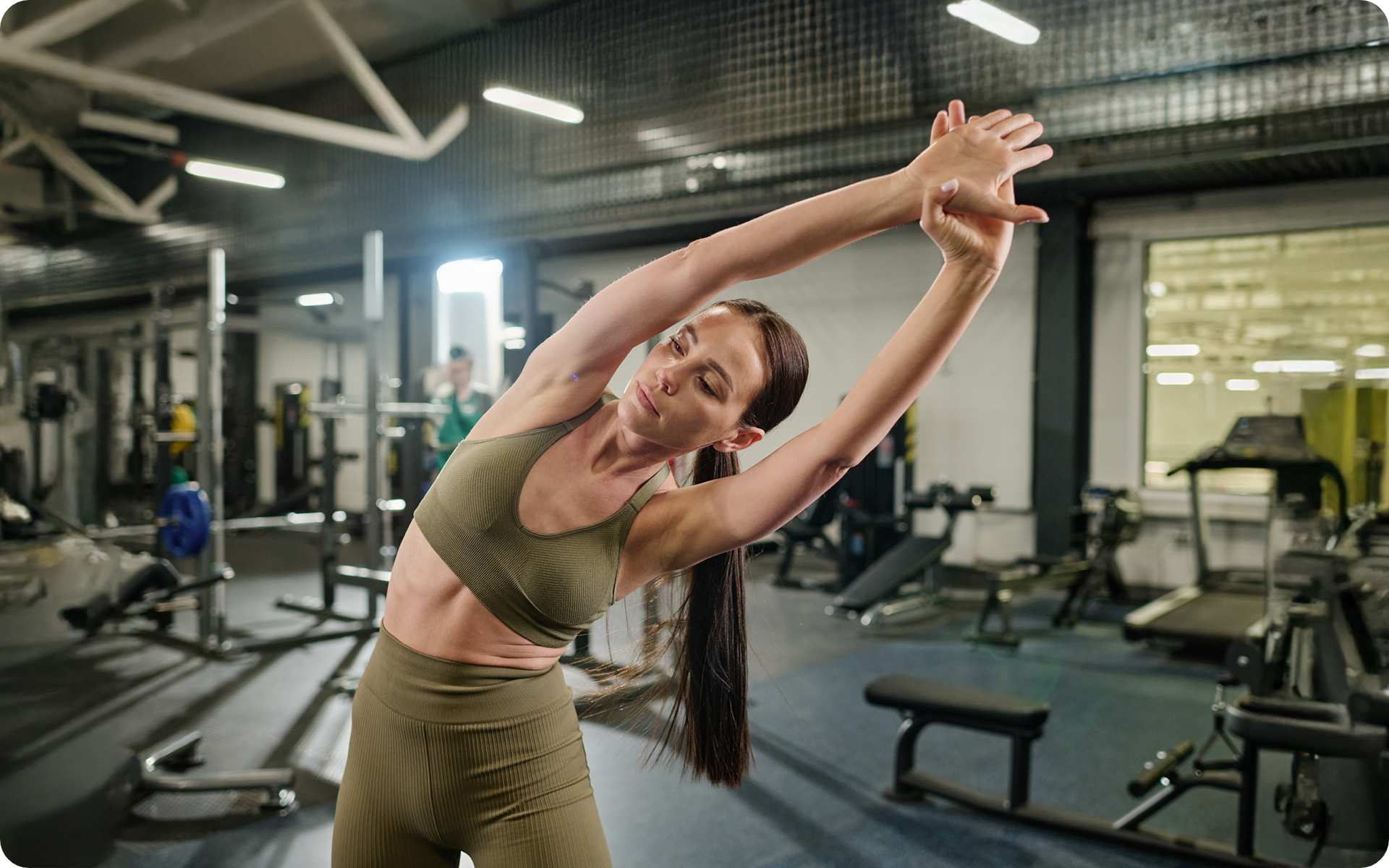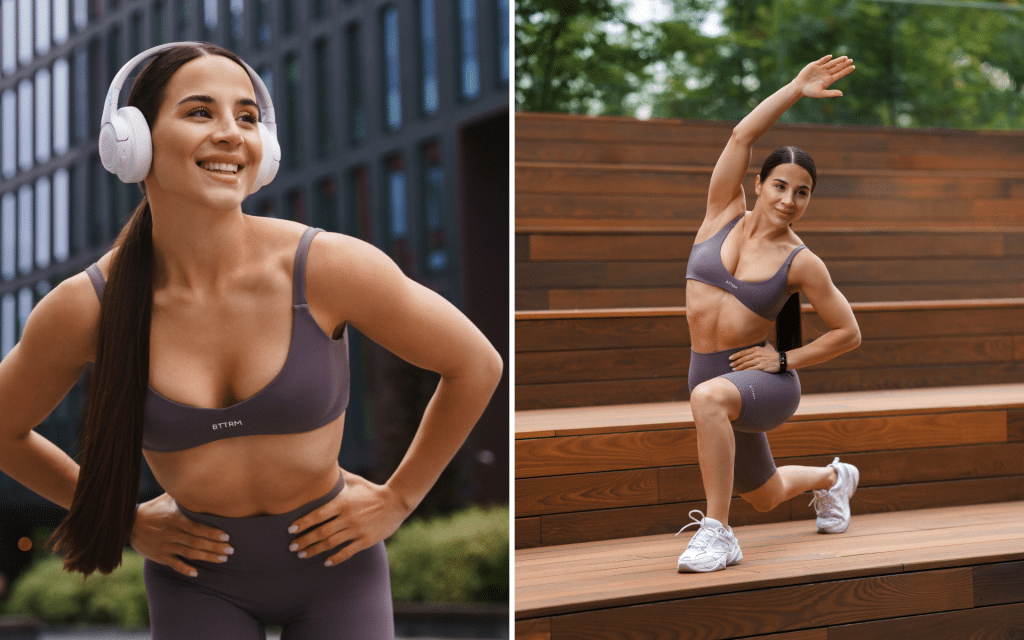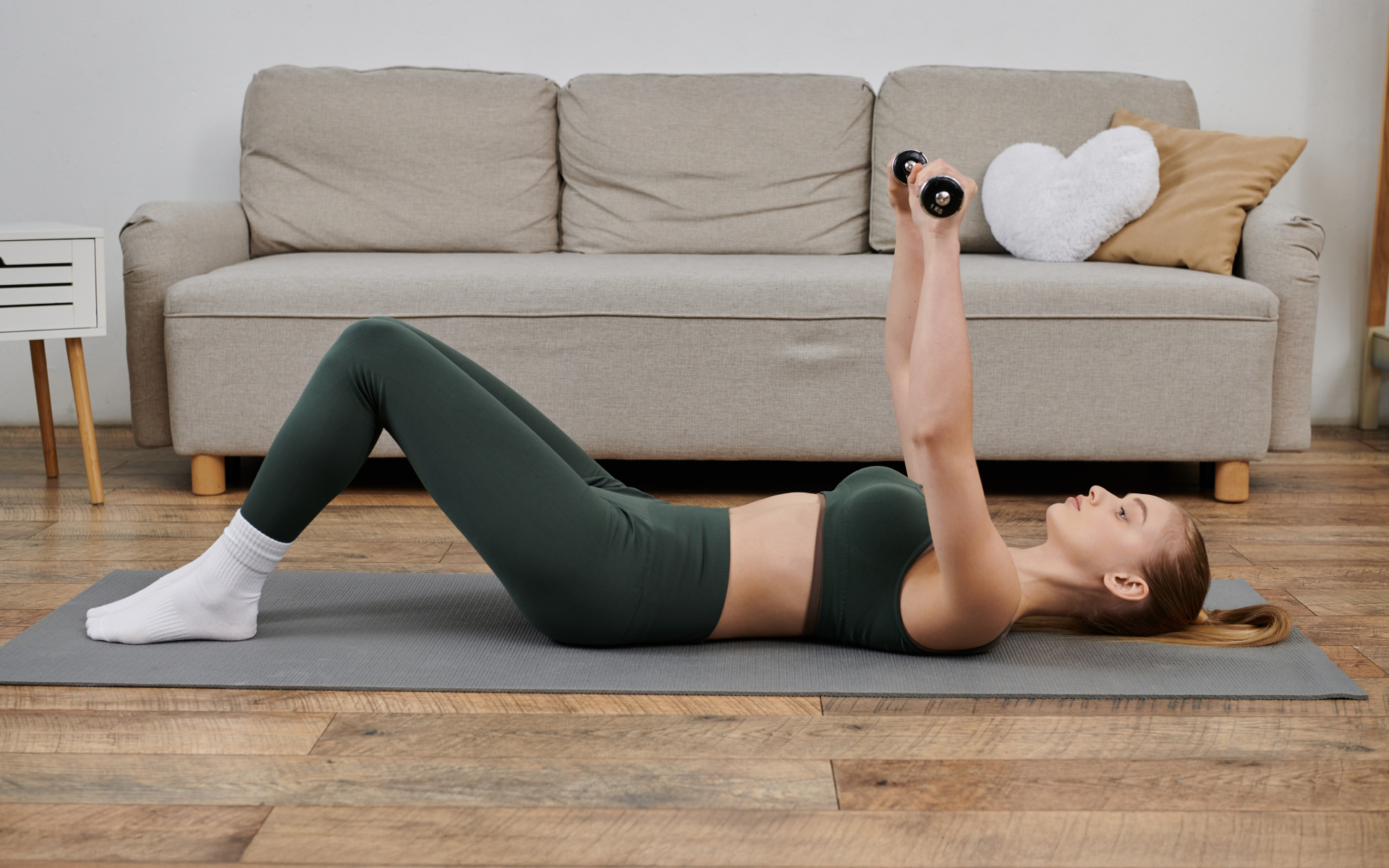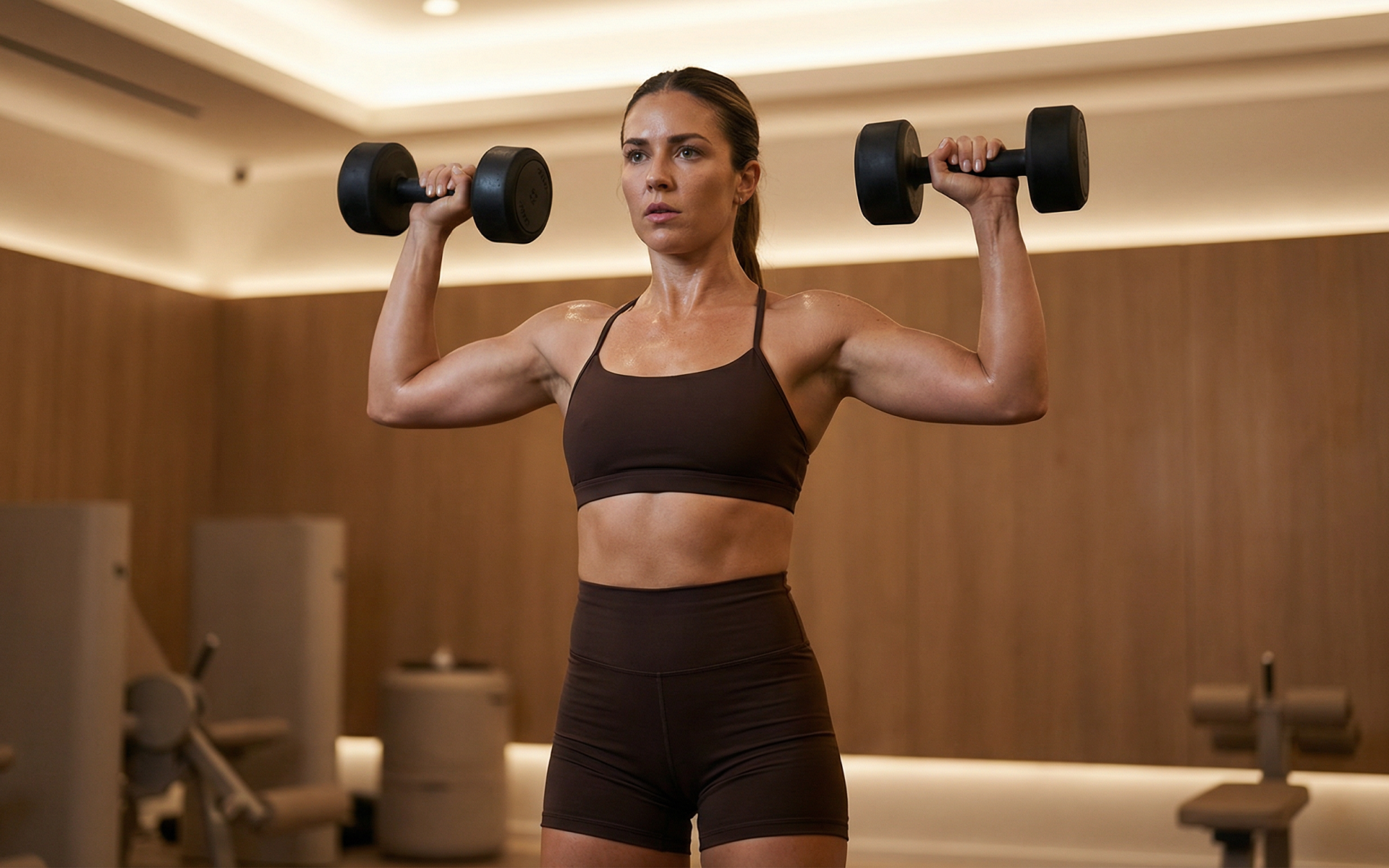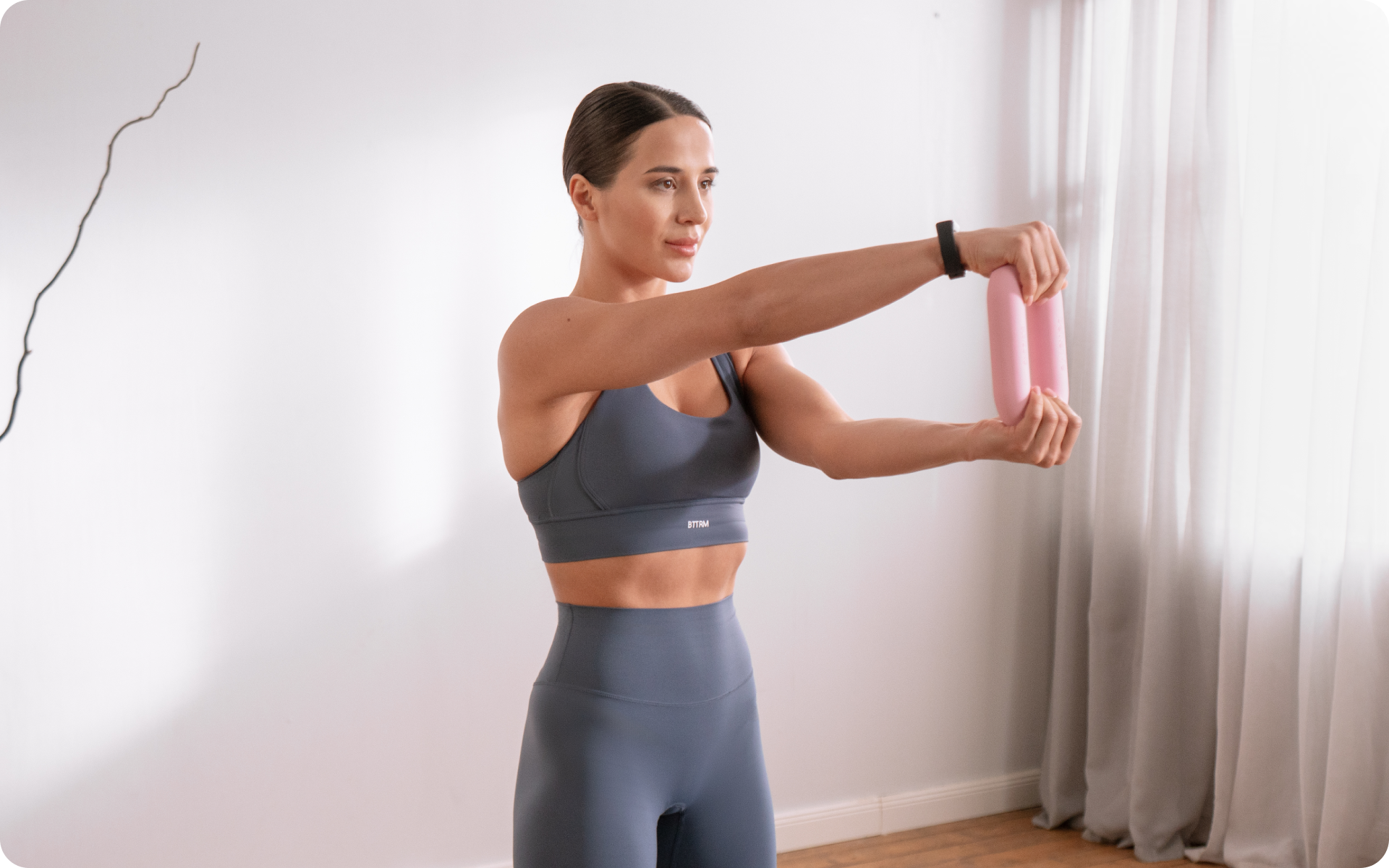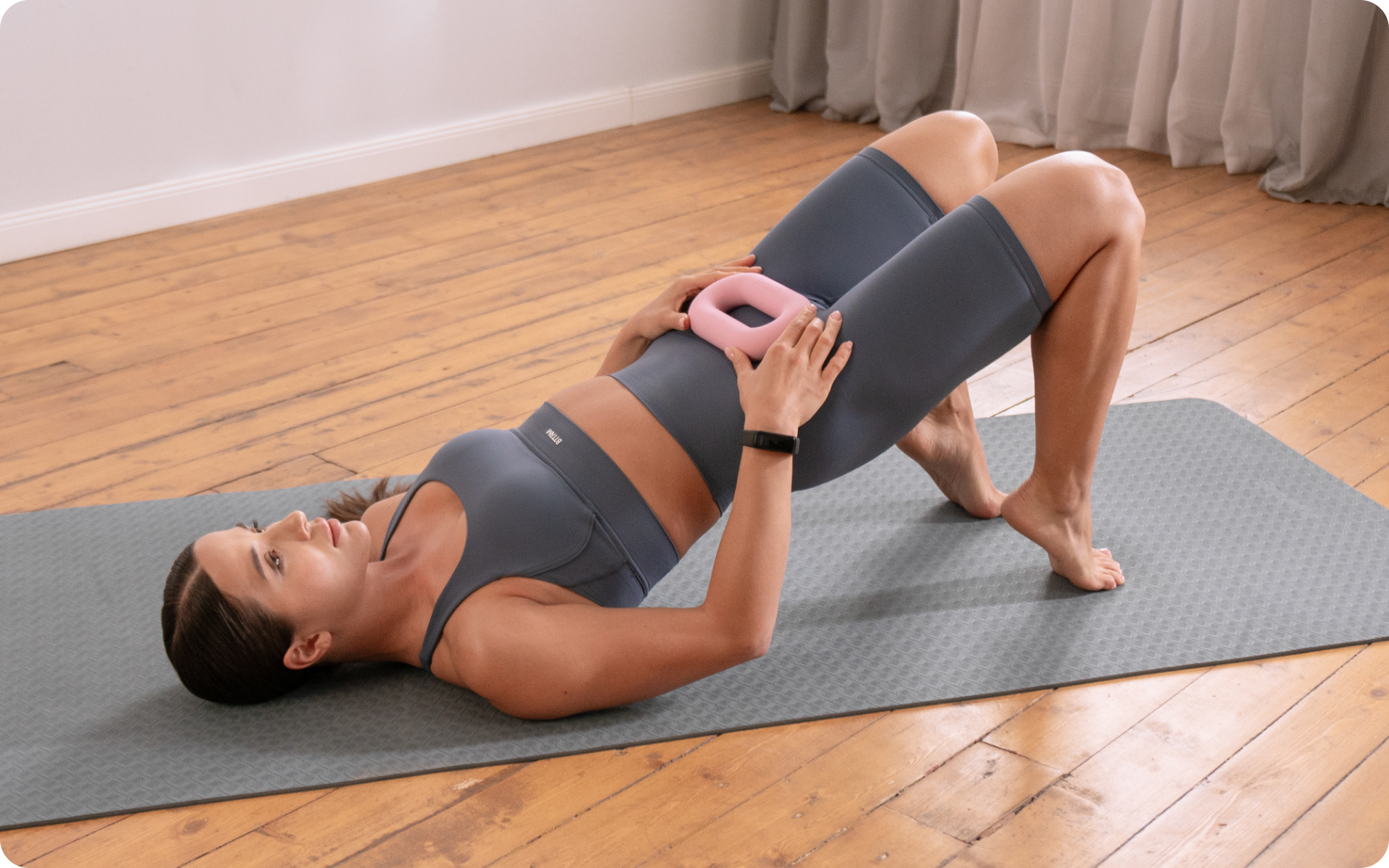Every athlete dreams of moving faster, jumping higher, and generating explosive power. These qualities are often the difference between good performance and greatness. But how do you train your body to develop these attributes effectively? One method worth exploring is contrast training.
At its core, contrast training is a system that pairs heavy resistance exercises with lighter, explosive movements. The science behind it hinges on a concept called post-activation potentiation (PAP). PAP refers to the temporary boost in muscle performance right after lifting a heavy load (1). By leveraging this, contrast training can help unlock the body’s ability to produce force quickly.
Here’s everything you need to know about this type of training.
What Is Contrast Training?
Contrast training is a specialized training method designed to enhance power and speed. It involves alternating between high-resistance and quick, explosive exercises during the same workout session (2). For example, you might perform a heavy back squat, then follow it with a set of bodyweight squat jumps.
The underlying principle is post-activation potentiation (PAP). This happens because lifting a heavy load primes your nervous system for enhanced performance (3). Here’s how it works in simple terms:
- When you lift something heavy, your muscles recruit more motor units (nerve and muscle fibers working together) (4).
- After you finish, these motor units remain heightened for a short time.
- Moving explosively during this period utilizes that extra readiness, training the body to produce force faster and more efficiently.
Contrast training stands out because it blends strength (heavy loads) and speed (fast, dynamic movements) into a single session. This dual focus challenges both the neuromuscular system (your brain-muscle connection) and the physical muscles themselves.
Over time, this method aims to improve the rate of force development (how fast your muscles can generate strength) while also building explosive power (5).
Who Should Use Contrast Training?
Not everyone will benefit equally from contrast training. Certain groups will find it particularly valuable based on their goals and needs. Below are some of the people most likely to gain from this method.
- Athletes in Explosive Sports
Sports like basketball, football, track and field, or volleyball demand bursts of speed and power. Athletes in these disciplines stand to benefit the most from contrast training (6). For example, a sprinter might pair heavy sled pushes with sprints to improve initial acceleration. For athletes where milliseconds and inches count, the ability to rapidly produce force can be a game-changer.
Reasons why BetterMe is a safe bet: a wide range of calorie-blasting workouts, finger-licking recipes, 24/7 support, challenges that’ll keep you on your best game, and that just scratches the surface! Start using our app and watch the magic happen.
- Strength and Power Lifters
Even weightlifters and powerlifters, known for focusing on maximal strength, can benefit (3). By incorporating contrast training, it can help them transition their raw strength into quicker, more dynamic movements. This is especially important for recruiting muscle fibers efficiently in their competition lifts.
- Intermediate to Advanced Lifters
Contrast training is not well-suited for beginners. It requires solid technique and a base level of strength to ensure safety and effectiveness. Those with some gym experience will manage the heavy loads and explosive actions better.
- Rehabilitation and Performance Coaches
For professionals helping rehabilitate athletes or improve performance post-injury, contrast training (when applied meticulously) can help restore speed after periods of reduced activity. Controlled application can rebuild neural firing patterns and explosiveness (7).
Read more: Real Food Diet: A Perfect Plan For Weight Loss
What Are the Benefits of Contrast Training?
Contrast training is more than just a fancy method; it brings evidence-based benefits to the table. Below are some of the most notable benefits, as understood from exercise physiology.
Improved Rate of Force Development
Your ability to produce force quickly is critical for explosive movements like jumping or sprinting. Contrast training enhances your rate of force development, allowing your muscles to fire faster (5, 7). This is largely due to how PAP primes the neuromuscular system to respond more effectively.
Enhanced Motor Unit Recruitment
The nervous system is key to performance. Contrast training helps you recruit a larger number of motor units, especially in fast-twitch muscle fibers (4). These are the fibers most responsible for powerful, high-velocity movements.
Greater Power and Speed Over Time
Working with both heavy and explosive exercises conditions your body to transition between these demands seamlessly. Over time, this can make you quicker, more explosive, and better equipped to handle sudden bursts of movement (7).
Promotes Muscle Coordination
The pairing of strength and dynamic exercises teaches your body how to coordinate multiple muscles effectively. For athletes or anyone performing compound movements, this improved synergy ensures better overall performance (3).
Time-Efficient Training
Because it combines strength and speed in one session, contrast training allows athletes to cover multiple training goals simultaneously. It’s an efficient way of enhancing power without training separate abilities on different days.
Sport-Specific Applications
One of the biggest pluses is how specific it can be to various sports (7). Whether it’s a swimmer exploding off the blocks, a baseball player swinging a bat, or a soccer player accelerating to chase a pass, exercises can be tailored to mimic movements on the field or in the gym.
Contrast Training vs Traditional Strength Training
Understanding the differences between contrast training and traditional strength training helps you determine which method aligns with your goals. Each approach offers unique benefits, and the choice often depends on your training objectives.
Pros and Cons of Traditional Strength Training
Pros
- Builds Maximal Strength: Heavy, compound lifts like squats and deadlifts are great for developing raw strength.
- Straightforward Programming: Traditional strength plans are easier to design and track.
- Foundational for Beginners: A strength base is necessary before exploring advanced methods like contrast training.
Cons
- Limited Speed/Power Focus: Traditional training doesn’t prioritize the speed or explosiveness needed for specific sports or activities.
- Neuromuscular Adaptations Plateaus: With time, the nervous system adjusts, and strength gains may slow unless stimuli are varied.
Pros and Cons of Contrast Training
Pros
- Enhances Explosiveness: Pairs of heavy lifts and explosive exercises improve power and speed simultaneously.
- Engages Fast-Twitch Fibers: These fibers are critical for rapid, forceful movements. Contrast training targets them effectively.
- Sport-Specific Benefits: Customizable to mimic actions like sprinting, jumping, or swinging.
Cons
- Complex Execution: Requires advanced technique and understanding of heavy lifts and explosive drills.
- Recovery Challenges: Neuromuscular fatigue is higher, needing meticulous recovery planning.
- Not Beginner-Friendly: Athletes need strength and mobility foundations to execute safely.
When to Choose Contrast Training Over Traditional Strength Training
Go for contrast training if your goal is to combine strength with speed and power. It’s ideal for athletes who need explosive movements, like sprinters or basketball players. Traditional strength training is a better starting point for beginners or those focused purely on gaining maximal strength.
Can You Combine Both Methods?
Yes, they can complement each other when programmed well. Many training cycles follow a strength-building phase using traditional methods, then transition into power development with contrast training. However, combining them in the same session isn’t always advisable due to the high physical demand. Safely blending both requires careful planning to avoid overtraining.
What Are Some Contrast Training Techniques
There are several popular techniques used in contrast training. Each leverages different movement patterns and intensities to maximize results.
1. Standard Contrast Pairing
This is the most basic approach, also called strength-plyometric pairing. It involves pairing one heavy strength exercise with a biomechanically similar explosive movement. For instance:
- Heavy back squat → Bodyweight squat jump
- Trap bar deadlift → Broad jump
The goal is to use the high neural activation from the heavy lift to improve the following explosive action.
2. French Contrast Method
This technique takes the concept further by adding additional layers to each pairing:
- Heavy load movement (e.g., back squat at 80–90% 1RM).
- Fast, plyometric movement (e.g., box jumps).
- Weighted explosive movement (e.g., loaded squat jumps).
- Assisted explosive movement (e.g., assisted jumps or band-assisted sprints).
This method is highly advanced and should only be attempted by experienced lifters with proper guidance.
3. Complex Training
Complex training uses longer rest periods after the heavy lift to achieve maximal post-activation potentiation (2). An example series could look like this:
- Deadlift → Sprint (with 8 minutes of rest).
This allows the nervous system to fully utilize the PAP effect for the explosive movement.
4. Overspeed or Assisted Movements
Lightly assisted drills, like banded sprints, are sometimes used after heavy efforts. The assistance encourages faster neural firing patterns, enhancing speed and agility.
What Are the Best Exercises for Contrast Training
Selecting the right exercises is key to maximizing the benefits of contrast training. These exercises should target power in both the upper and lower body.
Lower Body Power Movements
Lower body exercises should emphasize strength and explosive extensions to replicate actions like jumping or sprinting.
Examples:
- Back Squat → Vertical Jump
The squat builds strength; the jump trains speed and explosiveness. - Bulgarian Split Squat → Split Jump
This pairing works unilateral balance, strength, and power. - Trap Bar Deadlift → Broad Jump
Pulling strength combines with explosive forward propulsion. - Heavy Sled Push → Sled Sprint
Gradual resistance transitions into acceleration training.
Upper Body Power Movements
For the upper body, contrast exercises target strength and explosive force used in pressing, pulling, or throwing.
Examples:
- Bench Press → Plyometric Push-Ups
This combo improves chest, shoulder, and tricep power. - Pull-Up → Medicine Ball Slam
This pairing enhances back and core explosiveness. - Overhead Press → Overhead Medicine Ball Throw
Perfect for developing shoulder strength and explosive arm action. - Bent-Over Row → Band-Resisted Row or Row Throw
Improves power in pulling motions, highly specific for grappling or rowing sports.
By strategically employing these exercises, athletes can target gaps in speed and power while building neuromuscular efficiency.
How to Structure a Contrast Training Program
Designing an effective contrast training workout plan depends on your experience level. It’s essential to have realistic goals and align your programming with your fitness base. Overcomplicating things, especially for beginners, can lead to unproductive sessions and heightened risk of injury.
Beginner Programming
Beginners should focus on the basics. The priority is developing proficiency in heavy strength movements and introducing complementary explosive exercises gradually.
- Session Structure:
- Warm-Up (15–20 minutes): Dynamic mobility drills and light plyometric exercises to prime the nervous system.
- Contrast Pairs (2–3 sets only): Start with a simple pairing like a back squat (at ~60–70% 1RM) and bodyweight squat jumps.
- Cooldown (5–10 minutes): Stretching and foam rolling.
- Example Workout:
- Back Squat (3 reps at 70% 1RM)
- Bodyweight Squat Jump (5 reps explosively)
- Rest 2–3 minutes between pairs.
Keep the volume low and gradually work up to more advanced pairings once foundational strength improves.
Advanced Programming
Experienced lifters can explore more complex approaches, such as the French contrast method or additional contrast pairings. These plans involve higher intensity and volume, with programming to optimize post-activation potentiation (PAP).
- Session Structure:
- Warm-Up (20 minutes): Begin with foam rolling, mobility drills, and low-level plyometrics like pogo hops.
- Contrast Pairs (4–6 sets): Use exercises that target key sport-specific movements. Include sled drags, depth jumps, or accelerative sprints.
- Assistance Work (optional): Include exercises like Romanian Deadlifts or weighted carries to enhance accessory muscle groups.
- Example Workout (French Contrast Example):
- Back Squat (3 reps at 80% 1RM)
- Box Jumps (5 explosive reps)
- Loaded Squat Jumps (3 reps at light load ~30% 1RM)
- Band-Assisted Vertical Jumps (6 reps, full effort)
Measuring Gains
Progress comes from consistent tracking. Strength gains can be recorded using 1RM or sub-maximal lifts over time. Improvements in explosiveness, however, may require tools like a jump mat (for measuring jump height), sprint timing gates, or even video analysis to evaluate speed and explosivity. Keep in mind that gains can fluctuate based on recovery, program intensity, and overall workload.
Read more: 8 Pilates Reformer Core Exercises For A Strong And Sculpted Midsection
Periodization Strategies for Contrast Training
Contrast training demands careful planning to avoid overloading the body and nervous system. A balanced approach ensures steady progress without pushing into overtraining territory.
Planning and Phasing
Periodization involves structuring your contrast training program to balance intensity and recovery.
- Base Phase (4–6 weeks): Focus on building strength. Avoid contrast pairs and instead emphasize traditional lifting to enhance maximal force production.
- Contrast Phase (6–8 weeks): Introduce contrast training workouts with greater focus on power and speed. Keep the sessions short but intense.
- Transition Phase (2–3 weeks): Reduce intensity to allow the body to recover, especially after nearing peak performance.
Recovery as a Priority
Neuromuscular fatigue is a significant consideration. Use active recovery sessions (e.g., light cycling or swimming) or low-intensity mobility work between heavy contrast training days. Keep at least 48–72 hours of rest between explosive sessions to encourage recovery.
Deloading
Every 4–6 weeks, reduce total training volume or intensity. During the deload, focus on light, high-rep movements and mobility work. This allows muscles and nerves to recover while maintaining movement proficiency.
When it comes to weight loss, progress is made by inches, not miles, so it’s much harder to track and a lot easier to give up. The BetterMe: Health Coaching app is your personal trainer, nutritionist, and support system all in one. Start using our app to stay on track and hold yourself accountable!
Common Mistakes and How to Avoid Them
Even the most well-structured contrast training programs can go wrong when common pitfalls aren’t avoided. Here’s a breakdown of issues and how to manage them.
- Overtraining
Mistake: Overloading the body with too many sessions, failing to allow proper recovery, or neglecting rest altogether.
Solution: Limit contrast training to 2–3 sessions per week, allowing sufficient recovery time. Pay attention to sleep, hydration, and nutrition to support recovery. Implement active off-days to maintain mobility without fatigue.
- Poor Load Selection
Mistake: Using weights that are either too light or too heavy, compromising the effectiveness of post-activation potentiation (PAP).
Solution: Follow the intended rep range for explosive power and monitor load percentages. Generally, the strength component should be ~70–85% of your 1RM, with explosive exercises performed at bodyweight or with minimal loading (~30% 1RM).
- Neglecting Recovery Modalities
Mistake: Skipping cooldowns or recovery work, leading to chronic stiffness and reduced performance.
Solution: Prioritize post-workout stretching, foam rolling, and mobility drills like hip openers or thoracic rotations. Recovery work supports nervous system function and prepares you for the next session.
- Incorrect Exercise Pairing
Mistake: Pairing dissimilar exercises with no biomechanical overlap, diminishing the benefits of PAP.
Solution: Pair exercises with similar movement patterns. For example:
- Squats → Vertical Jumps (knee-dominant)
- Deadlifts → Broad Jumps (hip-dominant)
- Push Press → Overhead Medicine Ball Throws (overhead pressing mechanics).
- Ignoring Individual Differences
Mistake: Following generic programs without tailoring to your strengths, weaknesses, or fitness level.
Solution: Adjust exercise intensity, volume, and complexity to align with your abilities and goals. Beginners may need simpler movements, while advanced lifters can layer in techniques like the French contrast method.
Contrast training should be performed 2–3 times per week. This allows adequate recovery for the nervous system and muscles while maintaining training intensity. Spacing sessions 48–72 hours apart is ideal to prevent overtraining. Yes, but with modifications. Beginners should start with simple strength and plyometric pairings at lighter loads and lower volume. The focus should be on mastering technique and building a strength foundation before progressing to advanced methods. Sports that rely on power, speed, and explosive movements benefit the most. This includes track and field, football, basketball, rugby, volleyball, and weightlifting. It’s especially beneficial for activities requiring quick acceleration or high velocity. No, it’s not meant to replace traditional weightlifting. Contrast training should complement strength training to develop explosive power and speed. A strong foundation of traditional weightlifting is necessary to maximize the effects of contrast training. Track progress using strength metrics (e.g., 1RM testing) and performance tools like jump mats, sprint timers, or video analysis. Document changes in jump height, sprint speed, or explosive force to see improvement over time. This ensures measurable gains in both strength and power.Frequently Asked Questions
How often should you do contrast training?
Is contrast training suitable for beginners?
What sports benefit most from contrast training?
Can contrast training replace traditional weightlifting?
What’s the best way to track progress?
The Bottom Line
Contrast training is a powerful tool for athletes and experienced lifters looking to enhance power, speed, and neuromuscular performance. It bridges the gap between strength training and explosive, sport-specific movements. However, it’s not for everyone. Beginners and those without a strong foundation of strength should first focus on building that base.
For those ready to take the leap, contrast training might just unlock that next level of performance. Perfectly timed, research-supported, and highly functional, it’s a method that truly shows the connection between science and sport.
DISCLAIMER:
This article is intended for general informational purposes only and does not serve to address individual circumstances. It is not a substitute for professional advice or help and should not be relied on for making any kind of decision-making. Any action taken as a direct or indirect result of the information in this article is entirely at your own risk and is your sole responsibility.
BetterMe, its content staff, and its medical advisors accept no responsibility for inaccuracies, errors, misstatements, inconsistencies, or omissions and specifically disclaim any liability, loss or risk, personal, professional or otherwise, which may be incurred as a consequence, directly or indirectly, of the use and/or application of any content.
You should always seek the advice of your physician or other qualified health provider with any questions you may have regarding a medical condition or your specific situation. Never disregard professional medical advice or delay seeking it because of BetterMe content. If you suspect or think you may have a medical emergency, call your doctor.
SOURCES:
- Post-activation Potentiation Versus Post-activation Performance Enhancement in Humans: Historical Perspective, Underlying Mechanisms, and Current Issues (2019, frontiersin.org)
- What do we Know about Complex-Contrast Training? A Systematic Scoping Review (2024, sportsmedicine-open.springeropen.com)
- Effect of Post-Activation Potentiation on Weightlifting Performance and Endocrinological Responses (2025, mdpi.com)
- Post-Activation Potentiation Underlying Physiology and Implications for Motor Performance (2005, springer.com)
- Rate of force development: physiological and methodological considerations (2016, springer.com)
- Effects of unilateral and bilateral contrast training on the lower limb sports ability of college basketball players (2024, frontiersin.org)
- Complex and Contrast Training: Does Strength and Power Training Sequence Affect Performance-Based Adaptations in Team Sports? A Systematic Review and Meta-analysis
- The effect of complex contrast training with different training frequency on the physical performance of youth soccer players: a randomized study (2024, pmc.ncbi.nlm.nih.gov)
